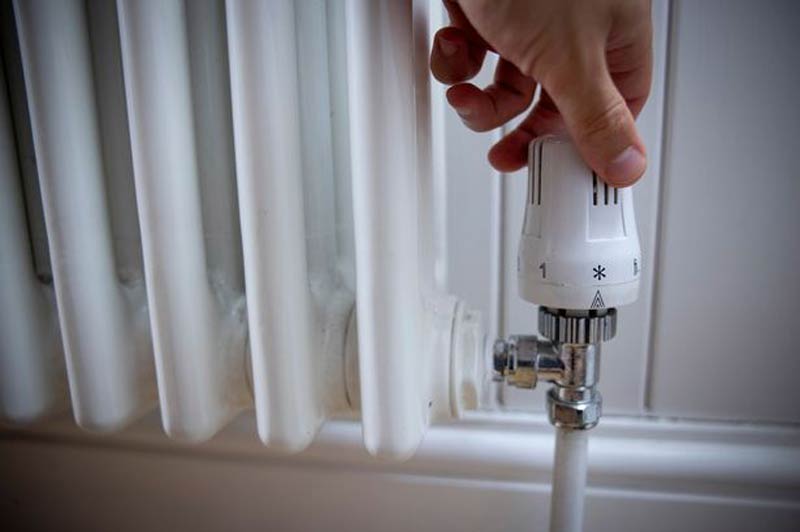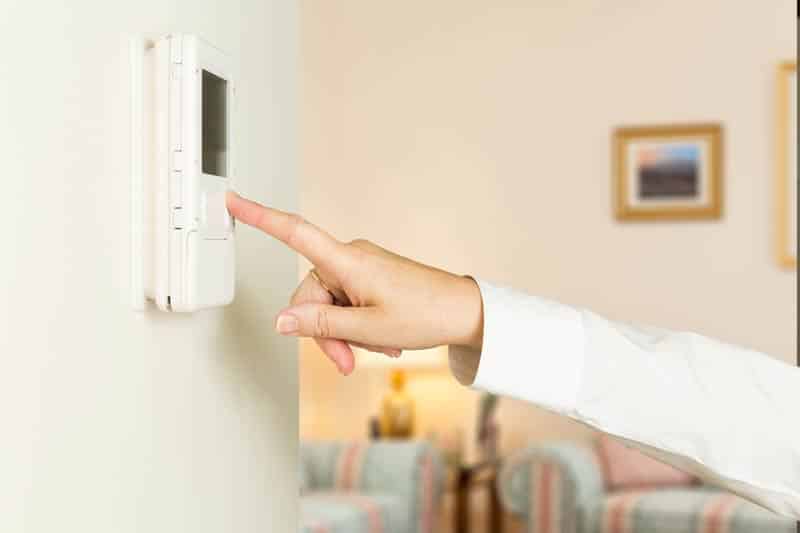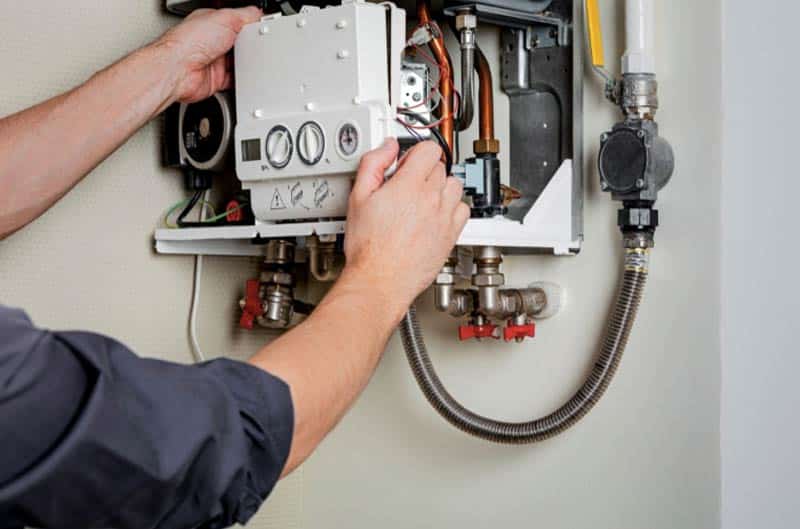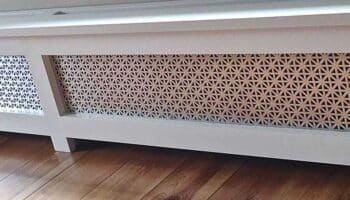Did you turn your radiator temperature dial to zero but can still feel heat coming from it? Then it sounds like your radiator is doing some unnecessary overtime. In this article, you’ll find out why it’s working so hard and what you can do to give it a well-earned break.
Here’s how to stop the heat when your radiator doesn’t turn off:
- Turn the lock shield off
- Replace the (TRV)
- Replace the thermostat
- Clean the diverter valve
No one wants to pay for heating that they don’t need. So, are you ready to fix a radiator in your home that won’t turn off? Then make sure you check out the extended guide below that will go through 4 reasons why your radiator won’t turn off and how you can repair it.
4 Methods to Turn Off Your Radiator
The weather is gorgeous outside and as a result, there is a comfortable temperature inside. So what do you do? You take advantage of the nice weather to turn a couple of your radiators off. But what if there’s one radiator in your home that just won’t quit? It keeps heating and heating as if you had turned it up rather than off.
When one of your radiators won’t turn off you begin to feel frustrated. It’s not often that you get to save money on heating and at last, the opportunity has arisen but you can’t make the most of it because the system won’t stop.
Coming up next in this article, you’ll find 4 reasons why your radiator is still hot. You will also find out what you can do to turn it off and start saving some money on utilities. Follow along with the steps in the next section.
Method #1 Turn the Lock Shield Off
To turn your radiator off, one of the first things you likely did was to rotate the (TRV) valve off. But what if your radiators are still warm even after turning that dial to zero? Then that means that the valve doesn’t turn shut the hot water off completely. There is a tiny gap and hot water is still getting through to the radiator.
So what can you do to stop this from happening? The first thing to try is to turn the lock shield off. With the lock shield and the (TRV) valve off, your radiator should stop warming up. Here’s how you can do it:
- Locate the lock shield. You will find this on the opposite side of the radiator to the (TRV) valve.
- Undo the cap by unscrewing it or by pulling it off. (The method of removing the cap will vary depending on your radiator type.)
- Use a wrench or a pair of pliers to rotate the lock shield and turn it off.
- NOTE: You must remember how many turns you give the lock shield. I recommend writing it down on a piece of paper. This will help you to keep the system balanced when you go to turn the radiator back on. When turning it back on, give the lock shield the same amount of turns you used to shut it off but anticlockwise.
- Wait, and then monitor the heat coming from the radiator
Would you like to watch these steps as they are completed? Then make sure you check out this tutorial video that will help you turn off your lock shield.

Method #2 Replace the (TRV)
Did you turn off your radiator using the (TRV) valve and rotate your lock shield off? If your radiator is still blazing after that it could be because the (TRV) is malfunctioning and needs replacing.
What if your TRV valve is stuck in one place and you can no longer turn it down? Then you could take a wrench to it and try to get it free again. But if that doesn’t work, you will have to proceed with replacing the (TRV) valve.
What should you do to fix a malfunctioning (TRV) valve? You will need to remove the old one and replace it with a new valve. Once you replace it you should be able to rotate the valve and turn your radiator on and off as you please.

Method #3 Replace the Thermostat
If your (TRV) valve isn’t faulty, you should check that your thermostat is working correctly. Your thermostat should control the temperature of the radiators in your home. But if all of your radiators stay on when you turn the heating off, this could indicate that it is faulty.
If you suspect that your thermostat is faulty, try to reset it. You can do this by:
- Pressing the reset button
- Taking the backplate off of the thermostat and removing the batteries for two minutes
- Pressing and holding the “OFF” button until the screen restarts
- Leave the thermostat unplugged for two minutes and then plug it back in again
TIP: For other methods of resetting your thermostat, you should consult your user manual. If you cannot find it, enter “[YOUR MODEL], [PRODUCT] Manual FAQ PDF” into an internet search engine. You should then follow the instructions for resetting your particular thermostat.
If your thermostat still doesn’t work after you reset it, you will need to replace it. You should only replace your thermostat with the exact same model and product as you had before. Some thermostats will require an HVAC technician to install them.
Once you have replaced it you should be able to easily adjust the temperature of all your radiators.

Method #4 Clean the Diverter Valve
The diverter valve has an essential function in combi boilers. It also works hand in hand with the thermostat in your home. The valve diverts hot water to your radiator. When you open the hot water faucet in the shower or the sink this also moves the diverter to action. It makes the valve open halfway so that it can send hot water to the radiators and other places.
Because your diverter valve is constantly moving, it would be easy for it to get stuck. It could also end up getting clogged by all of the sediment that builds up over time inside the boiler system.
If your diverter valve gets stuck or clogged in the open position, it will keep supplying the radiator with hot water even if your thermostat is off. If it gets stuck, you may also find that you are not getting enough or any hot water to other areas of your home.
To fix this problem you will need to buy a diverter valve cleaner that you can introduce into your boiler. It is best that you talk with your HVAC specialist about which cleaner will be best.
Once your diverter valve is clean again, it should divert the hot water properly to your radiators and faucets. This means your radiator will turn on and off as you direct it.
TIP: If you suspect that your diverter valve is to blame but are not sure, check with your HVAC technician.

Conclusion
So you turned the temperature valve down to zero on your radiator but nothing happened. You went back to the radiator hours later and it still felt warm, or even hot. What could be the problem? This article has discussed 4 methods you can use to fix this issue and save you from unnecessary heating expenses.
If this article has helped you, please consider supporting us by checking out some more of our free guides or signing up to our e-mail list.
Thanks for reading, and have a great day!
Cheers,
Craig







